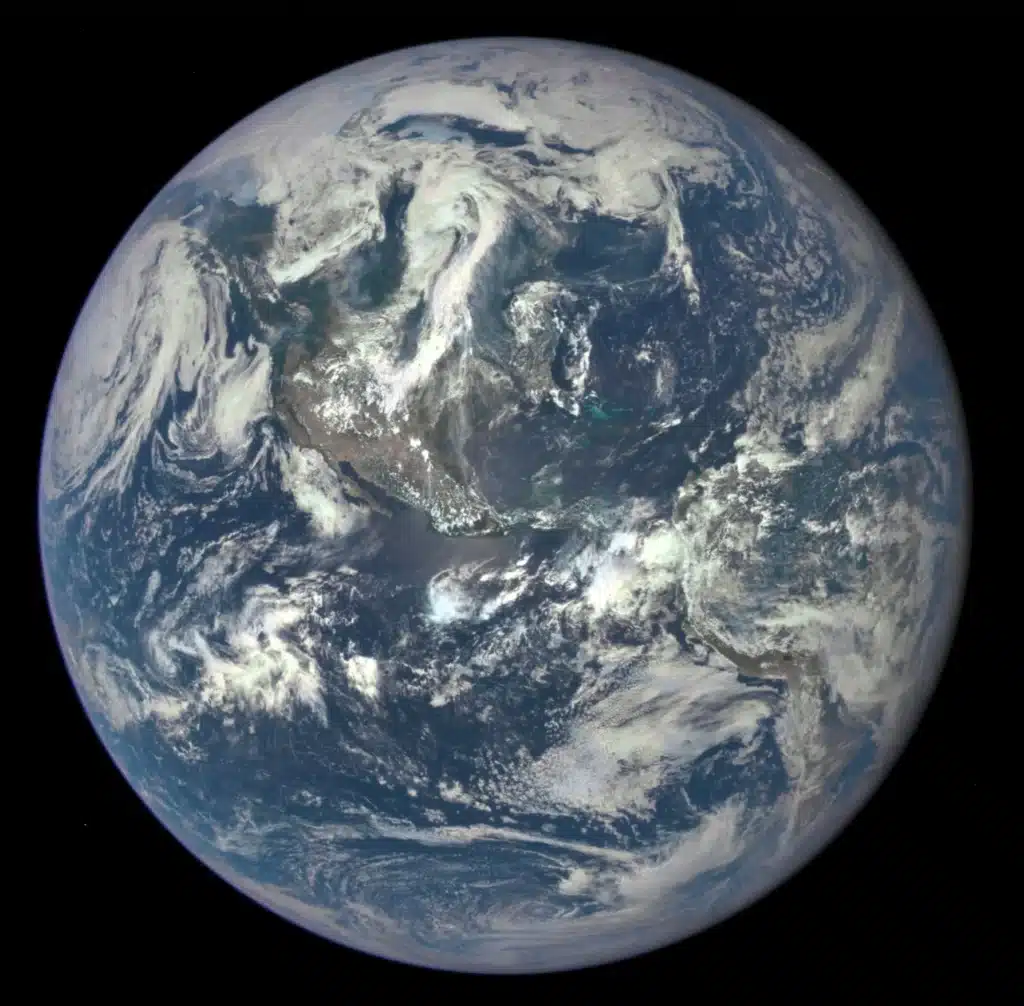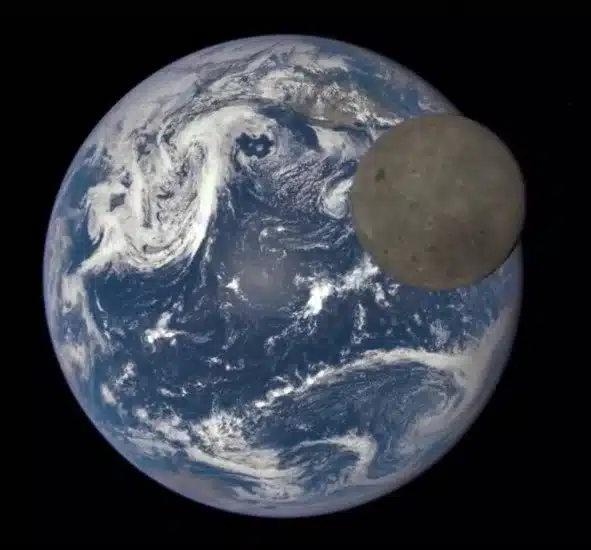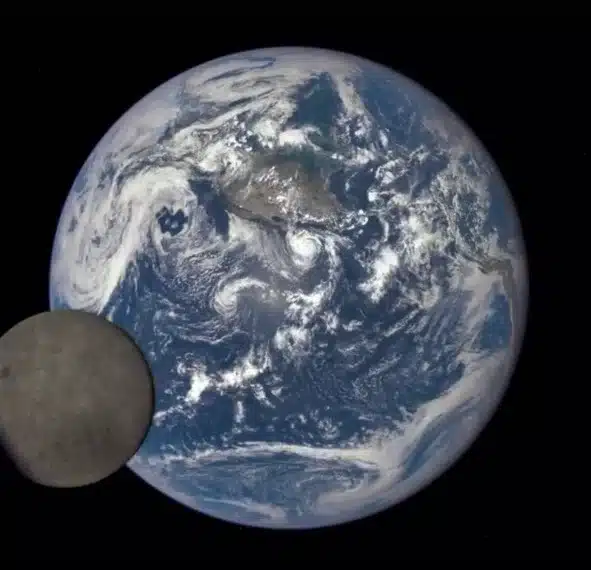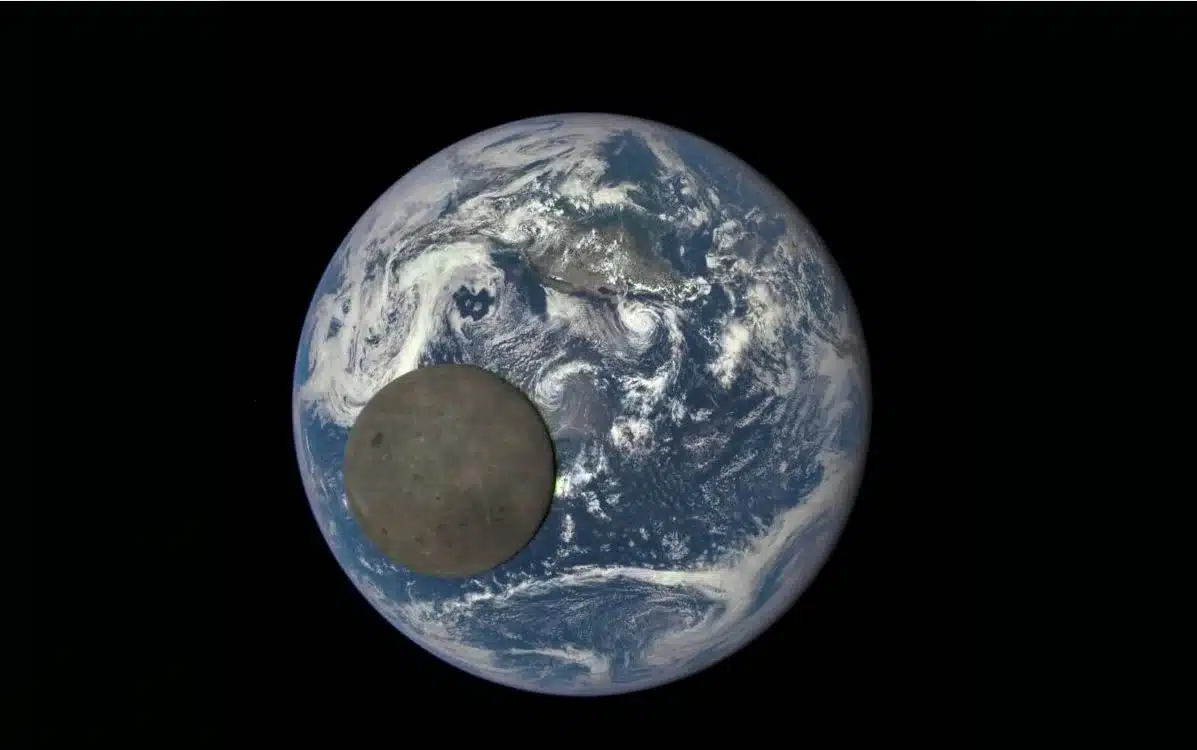NASA captured Moon crossing face of Earth from a million miles away
- NASA launched a new satellite system to monitor climate around Earth
- It’s called DISCOVR, and it’s located around 1.5 million km from Earth
- The photographs it captures are truly breathtaking
Published on Apr 19, 2024 at 5:40 PM (UTC+4)
by Alessandro Renesis
Last updated on Apr 19, 2024 at 5:40 PM (UTC+4)
Edited by
Tom Wood
This NASA picture of the Moon crossing Earth’s face is so crisp and clear it almost looks fake.
But it isn’t fake, it is 100 percent legit.
And it was captured from a million miles away.
READ MORE: SpaceX makes history using Starlink’s ‘Direct-to-Cell’ satellites
The picture was taken between 3:50 p.m. and 8:45 p.m. (Eastern Daylight Time) showing the moon moving over the Pacific Ocean near North America.
In the upper left corner of the image, we can spot the North Pole.
The image was taken by the Deep Space Climate Observatory (DISCOVR), a space climate and Earth observation satellite launched nine years ago by NASA using a SpaceX rocket, in partnership with the NOAA (National Oceanic and Atmospheric Agency) and the US Air Force (USAF).
Yes, that’s a lot of acronyms – we know.
It is located roughly one million miles away from Earth.
As we’ve covered, NASA loves a good acronym, so in addition to DISCOVR, they also came up with one for the camera it uses, which is called EPIC, which stands for Earth Polychromatic Imaging Camera.
The first image ever taken, pictured below, was released by NASA on July 6, 2015 from 1,475,207 km (916,651 miles) away.
So, that’s the EPIC taking pictures from DISCOVR, built by NASA, NOAA, and USAF.
Honestly, that’s enough now.

The timelapse highlights at least two things about Earth.
First, we know Earth is larger than the Moon but it’s one thing to know that, it looks and feels totally different when you actually see it.
The other thing that stands out is how bright Earth is, something NASA scientists also pointed out.
“It is surprising how much brighter Earth is than the Moon,” DSCOVR project scientist Adam Szabo said in a statement.
“Our planet is a truly brilliant object in dark space compared to the lunar surface.”


Increasingly more powerful telescopes are allowing us to see things we’d never seen before.
The new James Webb telescope recently captured a new galaxy that’s so far away it would have been impossible to spot using the telescope that was its predecessor.
Compared to that, a million miles is basically around the corner.
But even so, this picture is truly breathtaking.
DISCOVER SBX CARS: The global premium car auction platform powered by Supercar Blondie





